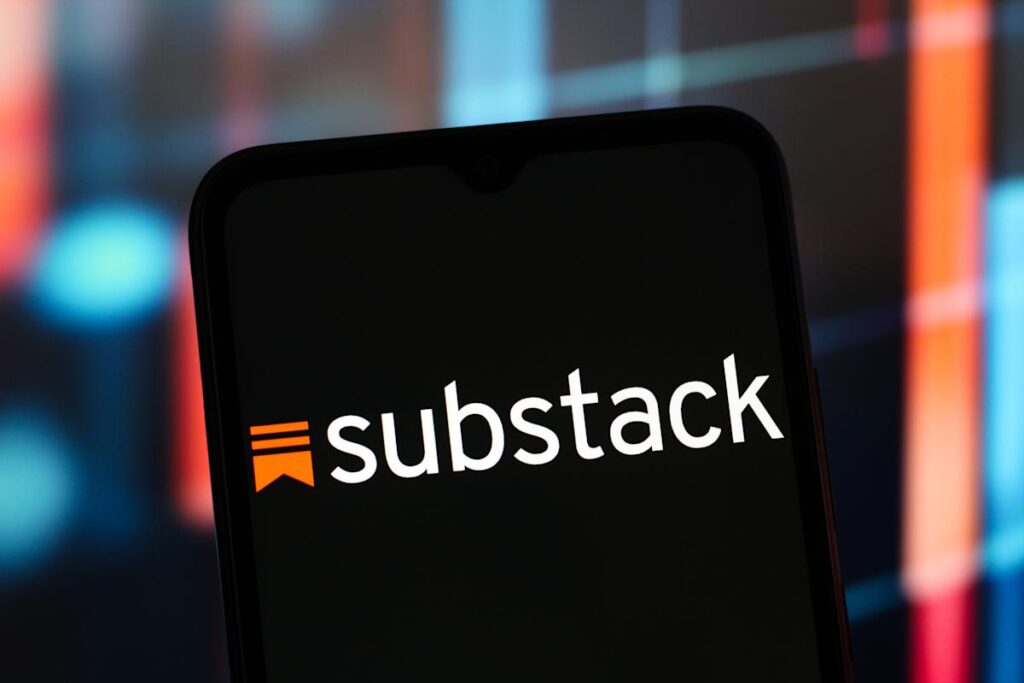It was easy to view Substack’s 2023 Nazi controversy as a kicked can that could turn up again. Well, white supremacist content led to another headache for the company this week. User Mag reported on Tuesday that the app sent a push alert to some users promoting a Nazi newsletter. The company told Engadget the notification was an “extremely offensive and disturbing” error.
The Substack newsletter in question describes itself as “a National Socialist weekly newsletter.” It includes “opinions and news important to the National Socialist and White Nationalist Community.” The far-right blog has a mere 757 subscribers. (That’s a drop in the ocean compared to, say, Heather Cox Richardson’s 2.6 million, George Saunders’ 312,000 and Kareem Abdul-Jabbar’s 236,000.)
Given the newsletter’s offensive content and relatively paltry audience, this wouldn’t seem like something to promote. According to the company, it didn’t mean to. “We discovered an error that caused some people to receive push notifications they should never have received,” a Substack spokesperson told Engadget.
“In some cases, these notifications were extremely offensive or disturbing,” the statement continued. “This was a serious error, and we apologize for the distress it caused. We have taken the relevant system offline, diagnosed the issue and are making changes to ensure it doesn’t happen again.”
Engadget asked Substack for extra details or context about how the accident happened. It didn’t have further comment at the time of publication. We’ll update this story if we find out more.
User Mag reports that those who clicked on the Nazi blog’s profile received recommendations for a similar one. That one had a larger audience of 8,600 subscribers.
One reason social users were quick to pounce on the latest incident: It provides a symbolic callback to Substack’s 2023 Nazi shitstorm. That’s when The Atlantic dug up “scores” of white-supremacist, neo-Confederate and Nazi newsletters on the platform. Some were monetized.
Substack’s policy is one of anti-censorship. “I just want to make it clear that we don’t like Nazis either — we wish no one held those views,” Substack cofounder Hamish McKenzie wrote in December 2023. “But some people do hold those and other extreme views. Given that, we don’t think that censorship (including through demonetizing publications) makes the problem go away — in fact, it makes it worse.”
After weeks of negative press coverage and prominent authors leaving the platform, Substack relented… sort of. On one hand, the company removed “some” pro-Nazi publications. However, it did so without changing its policies. Instead, it said five publications violated its existing content guidelines. Specifically, they broke rules prohibiting “incitements to violence based on protected classes.”
Some critics didn’t believe that was enough. The Platformer’s Casey Newton, a prominent voice who left Substack during the episode, thought the company needed to take more responsibility. “Every platform hosts its share of racists, white nationalists and other noxious personalities,” Newton wrote in early 2024. “In some very real sense, there is no escaping them online. But there ought to be ways to see them less; to recommend them less; to fund them less. Other platforms have realized this as they’ve grown up. Here’s hoping Substack does the same.”
Substack has since found its footing as a haven for independent content creators. Numerous journalists looking to build an audience sans traditional media have flocked to it. (Among others, that list includes Tina Brown, Jim Acosta, Terry Moran and Jennifer Rubin.) In recent years, Substack has added a Twitter-like social feature, live video and TikTok-esque vertical video.
The company said it had its biggest week during the 2024 presidential election with an 82 percent boost in paid subscriptions. It recently raised $100 million in funding.


